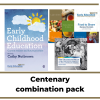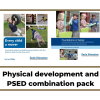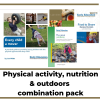Enabling environments and their impact on children’s learning
by Caroline Eaton Creating an enabling environment for play and learning requires careful planning and reviewing. As we all know the impact the environment, we find
Messy play provides so many explorative and investigative experiences, which promote so many of the characteristics of effective learning.
Here are some easy ways you can enhance your continuous early years provision with messy, tactile, multi-sensory play.
These ideas could be used large or small, inside or outside, dry and wet. The possibilities are endless so have fun experimenting.
Try to always have access inside or outside (or both) to sand and water as these tend to be staple play areas that have such endless potential and are often loved by many children. These areas can be enhanced by the above or by using different props and provocations, letting the children discover, or leaving empty…
Children’s powerful learning mechanisms mean that a lot of their development happens through playing and experimenting with high quality materials. For example, through many experiences of playing with water and other liquids, children move from simple Core Experiences for the EYFS actions (e.g. a baby flicking water with her fingers) to more complex, co-ordinated actions (e.g. a four year old carefully pouring water from one container into another and then carrying the container over to the sand and mixing the two substances together). Through repeating and practising these physical actions and experiments, children develop concepts about shape, space, and the properties of substances.
from Core Experiences for the Early Years (page 8) by Kate Greenaway Nursery School and Children’s Centre
For more help and information
by Caroline Eaton Creating an enabling environment for play and learning requires careful planning and reviewing. As we all know the impact the environment, we find
by Anni McTavish What are treasure baskets? “Treasure Baskets” are a collection of ordinary household objects, that are chosen to offer variety and fascination for
by Debi Keyte-Hartland Art in the early years To express, simply means to communicate. The expressive arts, therefore, are languages of communication, able to express
by Debi Keyte- Hartland The term “Loose Parts” was coined by Simon Nicholson, a British architect and designer whose parents were artists Barbara Hepworth and
What is continuous provision in EYFS? By Ben White Continuous provision in EYFS refers to the resources and learning opportunities accessible to children all of
Press release: May 2022 Early Education and Early Childhood Music practitioners Katie Neilson, Rosie Adediran and Nicola Burke are pleased to announce they have been
The role of music in the early years Everyone knows how much young children love to sing and dance, but all too often music is
Young children are artists. They use all sorts of materials to show what they have noticed about the world. They might draw the rain falling
Here are some links to resources to support your play. Loose parts play tookit is such a rich and comprehensive free publication from Inspiring Scotland to
Play with clay Clay is natural, it comes from the earth. It is cool to the touch and soft on our skin. It has a
How can I be more creative? Be inspired by our guest bloggers from Rachel Keeling nursery school who shared about their clay and sculpture project. Have









Early Education
2 Victoria Square
St Albans
AL1 3TF
T: 01727 884925
E: office@early-education.org.uk